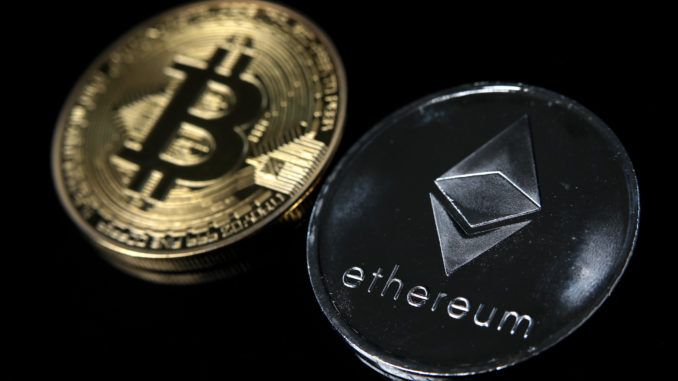

Tom Meredith was destined from an early age to be involved in blockchain technology companies that enable the world’s central banks to create their own digital currencies.
Afterall, he received his Mechanical Engineering Degree from Stanford University in 3 years and went on to graduate with an MBA in Entrepreneurial Studies from Harvard Business School.
But what really accelerated Meredith’s journey was the work he devoted to the space more recently, which laid the foundation for where he is today. Inventor of the “Smart Token” and the patent-pending “Atomic Swap” digital wallet, Meredith created companies that tapped novel technologies. Specifically, he productized his Smart Tokens as the foundational technology driving the products and services of his company BitMinutes (pre-paid phone minute token); bridging the gap between traditional settlement networks such as MasterCard, SWIFT and the growing Blockchain networks such as Ripple and Ethereum.
As the CEO and CTO of UberFi, Meredith has caught the attention of the central bank community. UberFi creates custom “Stablecoins,” a digital version of a country’s fiat currency, for central banks. It is the primary reason we sought him out for the interview that follows.
Question: Why are we not seeing more central banks creating their own electronic currency?
Answer: Almost every single sovereign country on the planet will issue a digital currency in one way, shape or form within the next 10 years.
However, governmental officials are still very leery of blockchain and tokens. Even though Bitcoin’s been around for 10 years, there’s still a mystery about it. Who invented it? We don’t know. Who authorized it? Nobody did. How can it be legitimate? There’s still those lingering doubts and questions in the back of the minds, especially for the regulatory bodies who are responsible for central bank decisions and central bank implementations as well as those managing the money supply in those countries.
Q: What about the Chinese, they don’t seem very hesitant?
A: The Chinese have jumped way ahead of the other major countries simply because they can. They’re a centrally planned economy and they’ve made the decision.
They believe that if they get there first, which will give them an advantage. For instance, they’re going to give a digital wallet to everybody who goes to the Olympics in China next year. This is their coming out party. They’re trying to get an advantage as they hope to supplant the dollar as the digital currency of choice. Right now, that title goes to Tether, which accounts for something like 70 percent of all transactions.
Hopefully, here in the States, we’ll decide soon and not be watching the industry grow from the sidelines. Yellen’s team examining this issue is a good group and will make the right decision.
There are a lot of pilot projects there. In fact, at UberFi, we’re in discussion with a dozen countries, all trying to make up their mind up as to how they want to implement this.
Q: How can blockchain technology help these countries?
A: Excellent question. The Digital Yuan or the Chinese digital currency doesn’t use blockchain. It’s centrally managed. It is all done from a rack of secure servers on a centralized basis. Afterall, even though blockchain has some inherent technology advantages in terms of having a decentralized system, like Bitcoin, it becomes a trustless system. You don’t have to trust in the person sending you the Bitcoin. You know that, once it gets there, it’s been validated by God knows how many Nodes that run the Bitcoin ecosystem. Having a trustless blockchain is good if you don’t trust the coin that you’re receiving to be of any value. But that’s not the case for these central banks. Then trust must be there.
And same for any other major currency. So, you don’t necessarily need a blockchain to create a trustless system. As long as you can believe that the ecosystem being presented to you to conduct these transactions, i.e., the wallet you’re using, the clearing and settlement system you’re using, that the token doesn’t get hacked in one way, shape or form, which again, Bitcoin has demonstrated on a decentralized basis. If you can show this on a centralized basis, you don’t even need blockchain to create a central bank digital currency. The Chinese have demonstrated and proven it.
The unique thing about what we have done in terms of offering solutions to these central banks is that we have a hybrid solution that integrates several blockchains with a centralized issuing platform. So, a central bank can choose how much centralization it wants. It may want to keep it centralized at the wholesale level between the banks who are involved in distributing and adjusting the money supplies of a digital currency. Or they may want to do it blockchain on a decentralized basis at the retail level.
So, it all depends on the goals of the central bank. And again, we try to present a whole host of potential solutions because every country is different. Blockchain is good if you don’t have trust in the system. Blockchain is bad if you’re trying to conduct 10 million transactions simultaneously, because there’s no blockchain out there that can just handle that type of Visa or MasterCard level of transaction capabilities.
Q: Can central banks do this on their own?
A: In the case of China, I’m sure that they took expertise from outside the government. There’s nobody inside any of these particular governments that’s going to have blockchain and or digital tokenization technology experience. It’s a very specialized area. Because of the newness of the technology, they’ve had to reach out to acquire the expertise from outside the government.
Typically, outside technology is being brought in and, to the extent it can be, is customized extensively. You could almost say it becomes a collaboration between outside technology companies and the desires and needs of the central bank.
For example, we have even gone so far as create a point-of-sale system. The retailer wallet supports the QR code, so implementation then becomes easy and transactions can be conducted. We’ve also created a digital bond offering software that the country can actually issue digital bonds into the almost $3 trillion digital currency ecosystem.
In sum, the successful companies are creating a suite of products and services that would be based around the central bank digital currency. It’s like a Chinese menu of services and capabilities.
Q: How will countries that embrace their own digital currency benefit from the strategy?
A: When you have a digital currency that you control, you can track benefits, because every one of these countries delivers benefits to their citizens in some form or fashion. Right now, it’s a hodgepodge as to how they get those benefits. Some of them are actually resorting to the debit cards. But when you have a largely underbanked population, they’re not used to going to an ATM machine, they can’t do a deposit directly into their bank account the way we do here in the States.
Thus, it becomes problematic.
However, they do all have a phone. You could deliver this electronically into a wallet. Of course, there’s a signup and an onboarding process. You have to verify an identification to associate with that wallet on that particular phone. But those tools are out there today and very widely available.
Once you send that money electronically as a benefit, you still need an ecosystem to be able to use those electronic benefits. Again, if they don’t bank, they just can’t go to the bank and say, here, give me my hundred dollars’ worth of Pesos or whatever currency.
Another benefit to the country is you can monitor transactions. And it sounds big-brotherish, which to some extent it is. But if you’re going to collect taxes equitably, you need this. The better information you have from watching these electronic cash transactions, the better you can tax the transactions, or add fees for conducting certain transactions.
We have seen this in Kenya, where our technology fuels the predominant money transfer or digital wallet for what is called M-Pesa. The government generates fees from taxing M-Pesa transactions, which again are all electronic. Delivering benefits is more efficient. And taxing transactions is definitely more efficient and more transparent.



